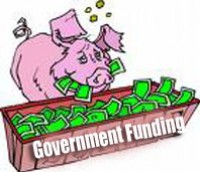In my previous post, Reducing GHG emissions in a finance-constrained world, I mentioned the fact that pledges of climate funding at Copenhagen, though very encouraging, is nowhere near the expected needed level. After the excitement upon the funding news waned, many people began to question the vagueness in the language of the Copenhagen Accord. Will the financial resources be delivered as promised?
In one of its briefings, the International Institute for Environment and Development (IIED) pointed out that there are six significant questions that need to be addressed soon:
- What are the sources of funding? From public or private sources? Counting private funding creates potential double counting of current flow of foreign direct investment.
- Is it new and additional? Without this condition, many established sources for health care and education can be counted, effectively lowering the amount allocated only for climate change.
- Who decides? Who has the authority to make the final call regarding what country or project should receive the money is always an important question.
- Grants or loans? Apparently, grants would result in much more impact.
- How predictable? How consistent is disbursement of the fund?
- What channels? Local government? NGOs?
Those six questions if answered in a certain way can wipe out the effectiveness of the fund. The purpose behind rich countries providing the money would potentially be totally distorted in that case. It would possibly be more about diverting global pressure and criticism rather than helping mitigate climate change. As a result, global attention is still needed until all the above questions are answered in a positive way and until there is transparency in handling of the money.
This problem of vagueness in wording already emerged during the Bonn conference in late April. As the Guardian pointed out, many countries double-counted pledges and aid budgets in their climate change mitigation money. Technically, money used for aiding development should be separated from climate funding. The six questions above need urgent answers to prevent any further misappropriation and misinterpretation of the fund.
During the recent financial crisis, it was once again proven that transparency improved market condition by reinforcing investors’ confidence and, as a result, increased investment and liquidity in the market. Climate finance is a growing global market with participation from the public and private sector, much like the financial market. If this level of opacity sustains, it would be no surprise that there is not enough money in the market to channel to climate mitigation.
Tags: Bonn, Climate Finance, Luan Nguyen

